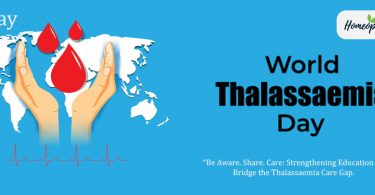
Abstract :
Geriatric weakness is a common condition in older adults that can significantly impact their quality of life. Early diagnosis and management are crucial to preventing progression and improving outcomes.
This case report highlights the importance of Five Phos 6x and individualised homoeopathic medicine in addressing Geriatric weakness.
Introduction:
Geriatric weakness is a pervasive condition affecting millions of elderly individuals worldwide • It is also Known as Frailty or Sarcopenia characterized by a decline in physical function, muscle mass & strength. Biochemic remedy Five Phos has been proposed as adjunctive treatments for geriatric weakness. Case reports / correlation of five phos & geriatric weakness is poorly understood. I aim to report a case treated with homoeopathic constitutional medicine along with five phos in a woman suffering from geriatric weakness.
Case Summary: A 80 yr old female presented with the symptoms of fever , coughing, bodyache, weakness since 2 years.
Clinical findings suggested of geriatric weakness. Individualized homoeopathic medicine Baryta carb 200 along with Five phos 6X was prescribed which showed a positive role in treatment of geriatric weakness.
Keywords: geriatric weakness, Frailty Index, Sarcopenia, Five Phos.
Introduction to geriatric weakness:
- Geriatric weakness often referred to as “Frailty”, is a common condition among older adults characterized by a decline in physiological reserve and increased vulnerability to stressors. It is associated with a range of factors, including muscle weakness, fatigue, weight loss and physical activity.
Cause:
- Muscle Atrophy: Age related loss of muscle mass (sarcopenia) can contribute to weakness.
- Chronic illness: Conditions such as heart disease, diabetes mellitus, arthritis can lead to decreased physical activity & strength.
- Nutritional deficiency: Poor nutrition can result in inadequate protein and calorie intake, leading to weakness.
- Neurological disorders: Like Parkinson’s disease, & stroke can affect strength and coordination.
- Sedentary lifestyle: Lack of exercise can exacerbate muscle weakness & frailty.
Symptoms:
- Decreased strength & endurance
- Fatigue or excessive tiredness
- Unintentional weight loss
- Difficulty performing daily activities
- Increased falls or injuries
Clinical Assessment criteria:
Healthcare providers may use various tools to assess frailty, including.
- Tried Trailly Phenotype
- Frailty Index
- Sarcopenia
- Geriatric strength & function assessment.
Case Report
Patient Information: A 80 yr old female came to OPD on 16th Jan 2024, with complaints of fever, coughing, bodyache, weakness for the past 1-3 years. Occasionally the patient took a few doses of paracetamol for fever herself with temporary relief.
She was fair, flabby, show heightened and a very dull looking lady. She had a history of long exposure to A.C and then after fever & coughing started. She said that coughing makes her more weak & lethargic. No significant past history and family history.
K/C/O- Hypertension, Dyslipidaemia, Taking – Telmisartan, Atorvastatin.
Generals
The patient was anxious & weak. Her memory & intellect were poor, and took time to walk, efforts to speak, poor gripping power.
App – decreased
Thirst – Thirsty but cannot able to drink due to bitter taste of mouth.
Tongue – clean & moist.
Bowel movement was regular and the character of the stool was loose and offensive.
The patient usually preferred to lie down and sleep was sound.
She was susceptible to cold & her thermal reaction was chilly.
Physical Examination:
T – 99 degree F, P- 70 bpm , spO2 – 95% , В.Р. – 130/80 mm оf Hg.
On physical examination, the patient appeared frail & weak. Her muscle strength was 3 /5 in the upper extremities and 2/5 in the lower extremities.
She had a slow gait and required assistance with walking. Her balance was impaired and she was at risk of falls.
Diagnostic Evaluation:
The patient underwent a comprehensive diagnostic evaluation, including:
- CBC – To rule out anaemia.
- Electrolyte panel – to evaluate for electrolyte imbalances.
- Thyroid function tests – to rule out hypothyroidism
- Vitamin D level to assess for vitamin D deficiency
- Dual-energy X-ray absorptiometry – to evaluate bone density.
- Chest X-ray PA view – to evaluate TB and Pneumonia.
Diagnosis: Based on the patient’s symptoms physical examination and diagnostic evaluation, she was diagnosed with Geriatric weakness, specifically frailty and sarcopenia.
Totality of symptoms:
- Lethargy, dullness.
- Marked weakness in old people.
- Difficulty in walking in old people.
- Decreased appetite.
- Coughing from exposed to cold wet air.
Repertorial Analysis
Repertorization was done by Synergy repertory.
- Mind – dullness
- Mind – prostration of mind
- Cough – cold air wet
- General – weakness
- General – weakness old people in.
- Stomach: appetite diminished.
Prescription:
- Baryta Carb. 200 X 3 dose X OD X 3 days.
- Placebo 30 QDS X 7 days.
- Five Phos 6x X TDS X 7 days.
The patient was followed for 6 months and was on placebo and on biochemic five phos 6x thrice daily for 6 months. After 7 days the patient had no coughing, fever, bodyache, and balance improved. But muscle strength, walking difficulty and weakness are still present. Then after, placebo 200 and biochemic five phos 6x was given thrice daily. After that muscle strength improved, able to walk without help of assistance, weakness improved markedly. Balance & gait improved.
Conclusion:
Geriatric weakness is a complex condition that requires a multidisciplinary approach to management. This case report demonstrates the efficacy of five phos in improving Outcomes in as older adults with Geriatric weakness .





